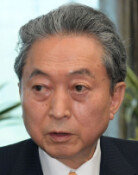<2>Tightening Media Gag by Pushing for Revision of Newspaper Act
<2>Tightening Media Gag by Pushing for Revision of Newspaper Act
Posted December. 17, 2007 18:19,
The ruling circle is advancing poisonous articles of the unconstitutional Newspaper Act as an executive order.
(The law on guaranteeing freedom of expression and function in newspapers and other media outlets, also known as the Newspaper Act, was first proposed by the former ruling Uri Party under the slogan of pursuing diversity in the media and passed the National Assembly floor in January 2005 through a bipartisan backroom dealing. The law has been in effect for more than a year since July 2006, but it went nearly moribund after the Constitutional Court ruled its articles against significant market power as discriminatory and unconstitutional.)
From the perspective of the media, the Newspaper Act, rather than focusing on development of the newspaper industry or promotion of media diversity, targeted some newspapers critical of the current administrations policies and imposed regulations, which in fact defy its proclaimed purpose by violating the rights of newspapers to make their points and edit articles freely.
Regarding this, law professor at Korea University Jang Yeong-soo said, The Newspaper Act, which is supposed to be enacted in line with the trend and changes of the entire media industry, paid too much attention to the newspaper market, which led to the imposition of a number of regulations that are out of reach with reality. The unconstitutionality of some articles in the law stemmed from hidden intentions that differed from the great cause the law espoused.
Nevertheless, the ruling circle is now trying to change the laws discriminatory wording of significant market power into large newspaper operators and propose alternative laws that would govern standards and criteria of the operators in a presidential executive order, defying the decision by the Constitutional Court.
Articles on Significant Market Power Ruled Unconstitutional
The Constitutional Court ruled against the Newspaper Act in June 2006, writing that its article on significant market power ran counter to the sprit of the Constitution. The court said that the article is not a rational vehicle in achieving the goal of media diversity and infringes upon the rights of newspapers and violates the equal rights of newspaper operators.
The article stipulates that newspapers are deemed as significant market power, if a company holds over 30 percent market share and three companies have over 60 percent, they would face discriminatory measures such as exclusion from newspaper development fund beneficiaries. The Uri Party claimed that a certain newspapers huge market share undermines the diversity of public opinions, but it suspiciously limited the scope of the media market to newspapers only, which implies that the government intended to target news outlets critical of its policies. Given that the Fair Trade Acts define significant market power when a company holds over 50 percent market share and three companies hold 75 percent combined, such tight regulations on the newspapers raise many eyebrows. Against this background, the courts decision is interpreted as an acknowledgement that the Uri Partys proposal is illegitimate and unconstitutional.
Ruling Circle Still Seeking Regulations on Newspapers-
Despite the ruling by the Constitutional Court over a year ago, the ruling circle still adheres to its objective to regulate the newspaper market by pushing for a revision. It went even further this time to nip any constitutional debate in the bud by including the specific standards and criteria on large newspaper operators as part of a presidential executive order. It is also strengthening the control over newspapers by making mandatory the setup of a reader right protection committee, which was originally an advised recommendation.
In the meantime, the Grand National Party came up with its own version of a newspaper bill, in which the article on significant market power is deleted and a newspaper company with less than 20 percent of market share can manage both newspaper and broadcasting businesses on the condition of its holding less than 10 percent of a broadcasting company.
The revised bills of the two parties are now pending in the commission for bill deliberation on the parliaments culture and tourism committee.
Media Ethics also Subject to Regulations -
The Newspaper Act has come under fire for many far-fetched regulations that tried to institutionalize even the ethics, which should be left to the medias responsibility. One such regulation is Article 4 and 5 that require fair and objective coverage. The two articles have identical content to Article 3 in the Basic Press Act during the Jeon Du-hwan administration in the 1980s.
These articles take a one-size-fits-all approach in assessing fairness and objectivity of every newspaper. As a result, newspaper companies would have no choice but to print similar papers rather than each freely expressing opinions and perspectives within the confines of the fairness part. The Constitutional Court shelved its decision dismissing the articles as non-binding regulations.
An installation of an editing committee based on labor-management discussions also seemed to have gone overboard. Amid controversy over the enactment of the newspaper law, many have pointed out that legalizing an editing committee constitutes violation of newspapers editing rights, and later it was altered into non-binding regulation. Consequently, newspapers could decide whether to set up an editing committee or not. At that time, however, the majority of news outlets, where an editor-in-chief is fired or hired based on an internal agreement, did not need such system.
According to media experts, the governments pointless attempt to institutionalize recommended opinions or imposing unnecessary regulations aims to display its so-called reformative legislation effort.
Press Arbitration Law Clashes with Freedom of Press-
The press arbitration law, in part, clashes with the constitutional value of freedom of press by overly describing the media only as a perpetrator, though it apparently fulfills its goal of providing quick compensation for victims of media coverage.
A case in point is that an article in the law states that not victims themselves but a third party such as a civic group asks the Press Arbitration Commission to draw correctional measures and make them public, raising the possibility of civic groups, at odds with certain papers, demanding too many correctional measures.
In addition, under the law, the Press Arbitration Commission can make recommendations regarding news coverage deemed conflicting with national and social interests. This also left much room for arbitrary interpretation of what national social interests are.
[Money Intervention in Newspaper Market Can Be Misused for Control]
The Korea Commission for the Press (KCP), newly established as the statutory organization of the Newspaper Act, is being criticized for intervening in the newspaper market through direct and indirect financial aid for newspaper companies.
Launched in October 2005, KCP spent 25.18 billion won last year and 21.38 billion won this year to carry out subsidy projects with the Newspaper Development Fund raised mainly through government subsidies.
KCP gives a portion of this budget to newspaper companies, which is the target of criticism so that such aid can undermine the freedom of press and be misused as a press control method. Last year, KCP gave 273 million won to 11 press companies, including Kyunghyang Daily and Ohmynews, and this year 8.47 billion won to 43 companies including Hankyoreh Shinmun, Seoul Shinmun, and Pressian.
Government aid to press companies is more a method of control than a subsidy in the actual sense, says professor Hwang Geun of the Journalism Department at Sun Moon University. In Europe, cases of aid to press agencies with public fund are often deemed unconstitutional because it is difficult for the press to oversee and criticize the authority when they are being helped by the government.
In particular, KCP was criticized in the October 2006 National Assembly inspection on state affairs for its careless selection of aid receivers and fund management. It was at this occasion that some pointed to the fact that Minjok 21, a monthly magazine that publicized an article praising the Songun politics of North Korea, was included as a beneficiary of government subsidy, and that eight out of the nine press agencies selected for loan subsidy had given up the loan due to mortgage paying incapability.
It is also pointed out that the fact that Korea Commission for the Press (KCP), in abidance with the Newspaper Act, is having newspaper companies report the management data such as the number of issues, number of copies sold, and the income from subscription, can hinder the ways of press companies. KCPs cover is that it is observing the trend of the newspaper industry, but the management or business data of newspaper companies can be used as a means of press control when dominated by a government agency.
Others also argue that it is strongly possible for the KCP administration to become government-friendly because there is a high possibility that among the nine commission members, six are government-friendly figures including the three recommended by the Ministry of Culture and Tourism.
Meanwhile, the Ministry of Culture and Tourism is discussing the measure to merge KCP and the Korea Newspaper Circulation Service with the existing the Korea Press Foundation to avoid overlap of tasks. The impetuous establishment of newspaper-related institutions and following their merger show how rashly these institutions were set up, said fellow professor Kim Ok-jo of the Communications Department at Hallym University.





![태국 환율 왜 이래…범죄자금 유입? 바트화 초강세 미스터리[딥다이브]](https://dimg.donga.com/c/138/175/90/1/wps/NEWS/IMAGE/2025/12/17/132987491.1.jpg)

